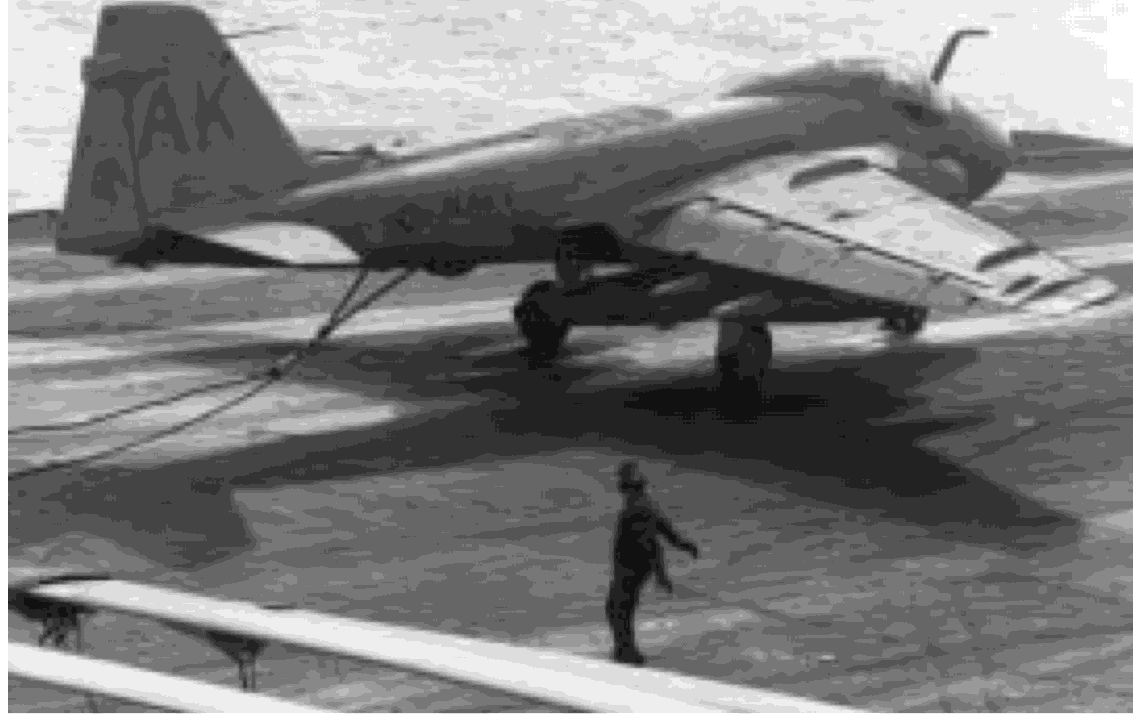
350
UNITED STATES NAVAL AVIATION
1910-1995
1986-Contin ued
deployed VAQ squadrons and the HARM missile capa-
bility of the VA squadrons. VA-81, with its A-7E Corsair
lIs, participated in the retaliatory strike against the Surt
SA-5 missile site by acting as the decoy group for VA-
83s A-7Es, which fired their HARMs against the site,
putting it out of action. On the same day, A-6A
Intruders from VA-34 attacked and damaged a Libyan
Combattante II G-class fast attack missile craft with a
Harpoon missile. This was the first operational use of
a Harpoon in combat. A follow-up attack by VA-85 air-
craft using Rockeye bombs resulted in the sinking of
the Combattante. More action followed-Intruders of
VA-85 attacked a Libyan Nanuchka II-class missile
corvette and dropped Rockeye cluster bombs on the
corvette. The damaged Nanuchka II was forced to
return to the port of Benghazi. On 25 March a second
Nanuchka II-class missile corvette was attacked by a
couple of VA-55 Intruders. However, their Rockeyes
missed the corvette. This attack was followed up by
Intruders from VA-85, firing a Harpoon which
destroyed the vessel.
25 March
The final carrier launching of a Navy fleet
F-4S Phantom II was completed by pilot Lieutenant
Alan S. Colegrove and radar intercept officer
Lieutenant Greg Blankenship of VF-151. The aircraft
was launched from
Midway
during flight operations in
the East China Sea. The F-4 was scheduled for replace-
ment by the F/ A-18 Hornet.
28 March
VFA-106, the Atlantic Fleet F/A-18 readi-
ness squadron, graduated its first class of replacement
pilots. Nine of the 10 graduates were aviators assigned
to the VFA-137 Kestrals, which were established in
1985.
29 March
Lieutenant Commander Donnie L.
Cochran, the first African American member of the
U.S. Navy's precision flight demonstration squadron,
the Blue Angels, completed his initial performance
during the team's air show held at Luke AFB, Ariz.
Lieutenant Commander Cochran was selected in
September 1985 for the number three position on the
flight team based at Pensacola, Fla.
14-15 April
Operation El Dorado Canyon-F/A-18
Hornets from CVW -13 aboard
Coral Sea
and A-7E
Corsair lIs from
America
conducted air-to-surface
Shrike and HARM missile strikes against Libyan sur-
face-to-air missile sites at Benghazi and Tripoli, min-
utes before attacks by the Navy's A-6Es from the two
carriers and the Air Force's F-111 s. Intruders from VA-
55 and -34 conducted a low-level bombing raid on ter-
A VA-55 A-6E Intruder lands on Coral Sea. Intruders from VAs 55
and
34
struck terrorist targets
in
Benghazi, Libya.
rorist targets in Benghazi, Libya. Aircraft from VA-55
hit the Benina airfield and VA-34 struck the Benghazi
military compound. Navy E-2C Hawkeyes and EA-6B
Prowlers, along with Marine Corps Prowlers, provided
electronic countermeasures and command control
capabilities for aircraft involved in the strikes against
Libya. CVW-1's F-14A Tomcats and CVW-13's F/A-18
Hornets provided fighter support for the operations.
28 April
Enterprise
transited the Suez Canal, becom-
ing the first nuclear-powered carrier to do so, as it
steamed toward the Mediterranean to relieve
Coral
Sea.
The transit began at 0300 and took approximately
12 hours to complete.
2 May
The feasibility of blimps for active duty was
determined by a Navy board and later recommended
to the Secretary of the Navy for funding. Studies con-
cerning the usefulness of Navy airships were complet-
ed earlier in 1985.
2 May
The Navy initiated a contract for the V-22 tilt-
rotor aircraft with the team of Bell Helicopter Textron,
Fort Worth, Tex., and Boeing- Vertol Company,
Philadelphia, Pa., as codevelopers of the joint-services
aircraft.
5 May
The Secretary of the Navy designated 1986 as
the Diamond Anniversary of Naval Aviation, during
which significant historical Naval Aviation achieve-
ments would be recognized in events throughout the
year.
 |
20 |
 |